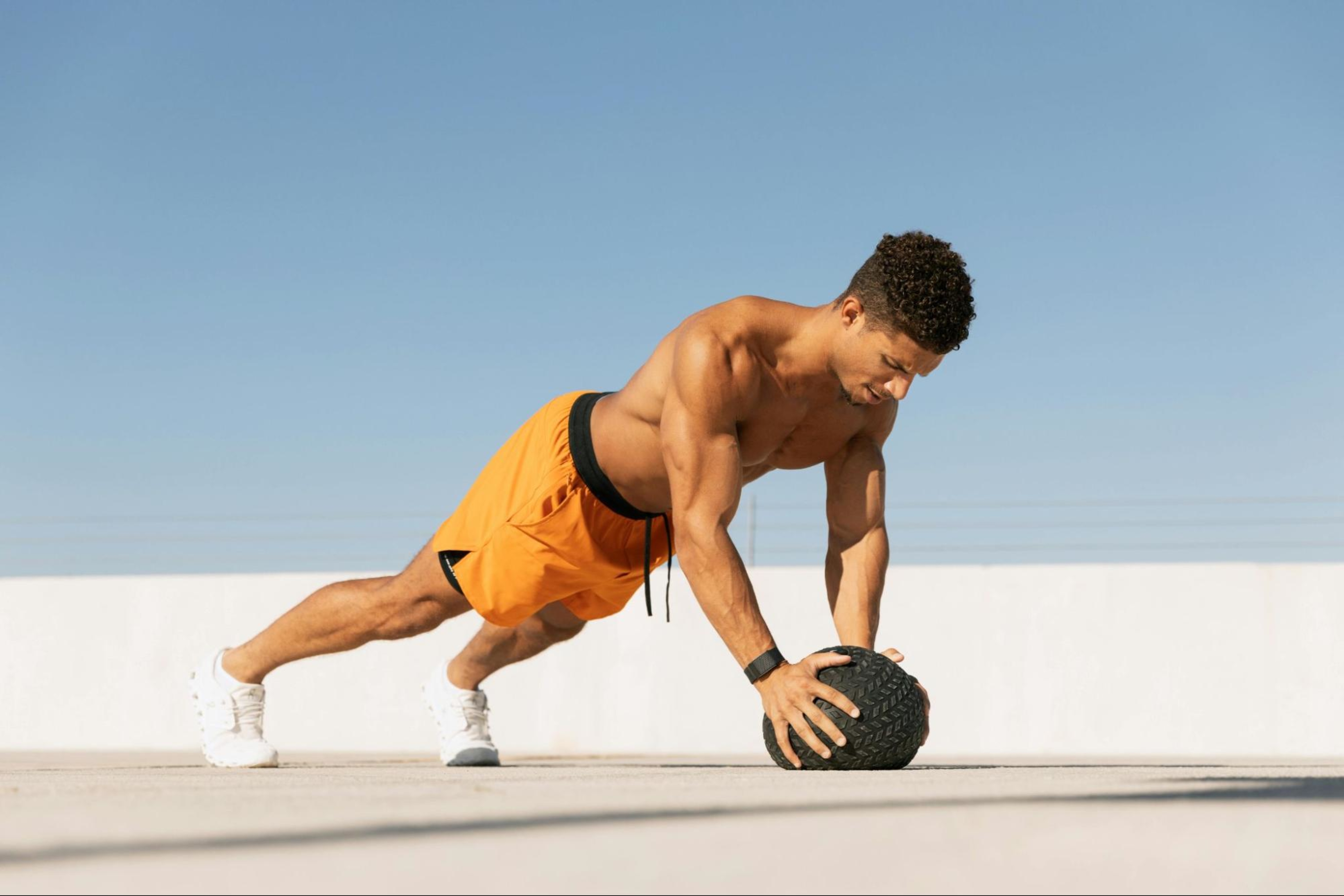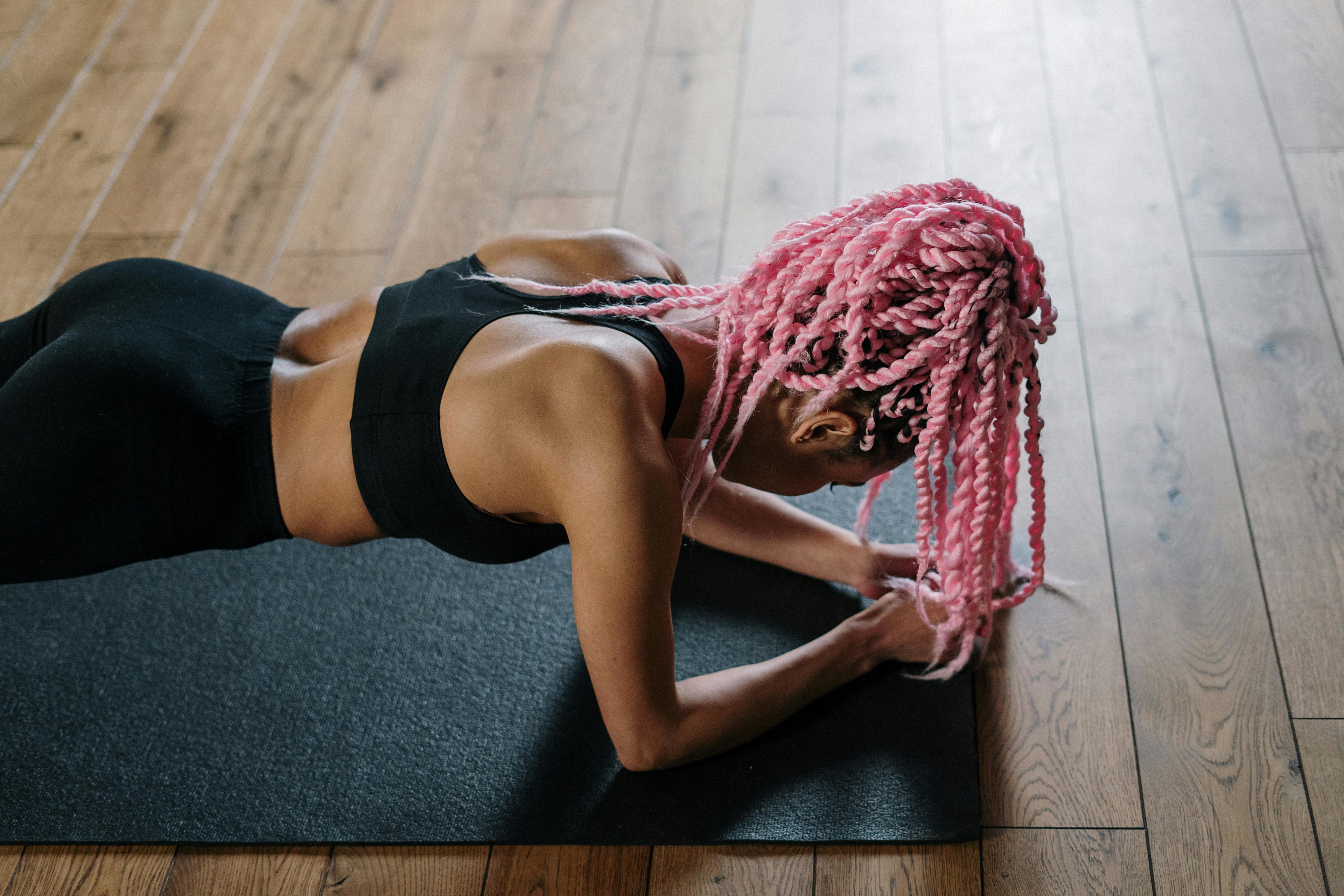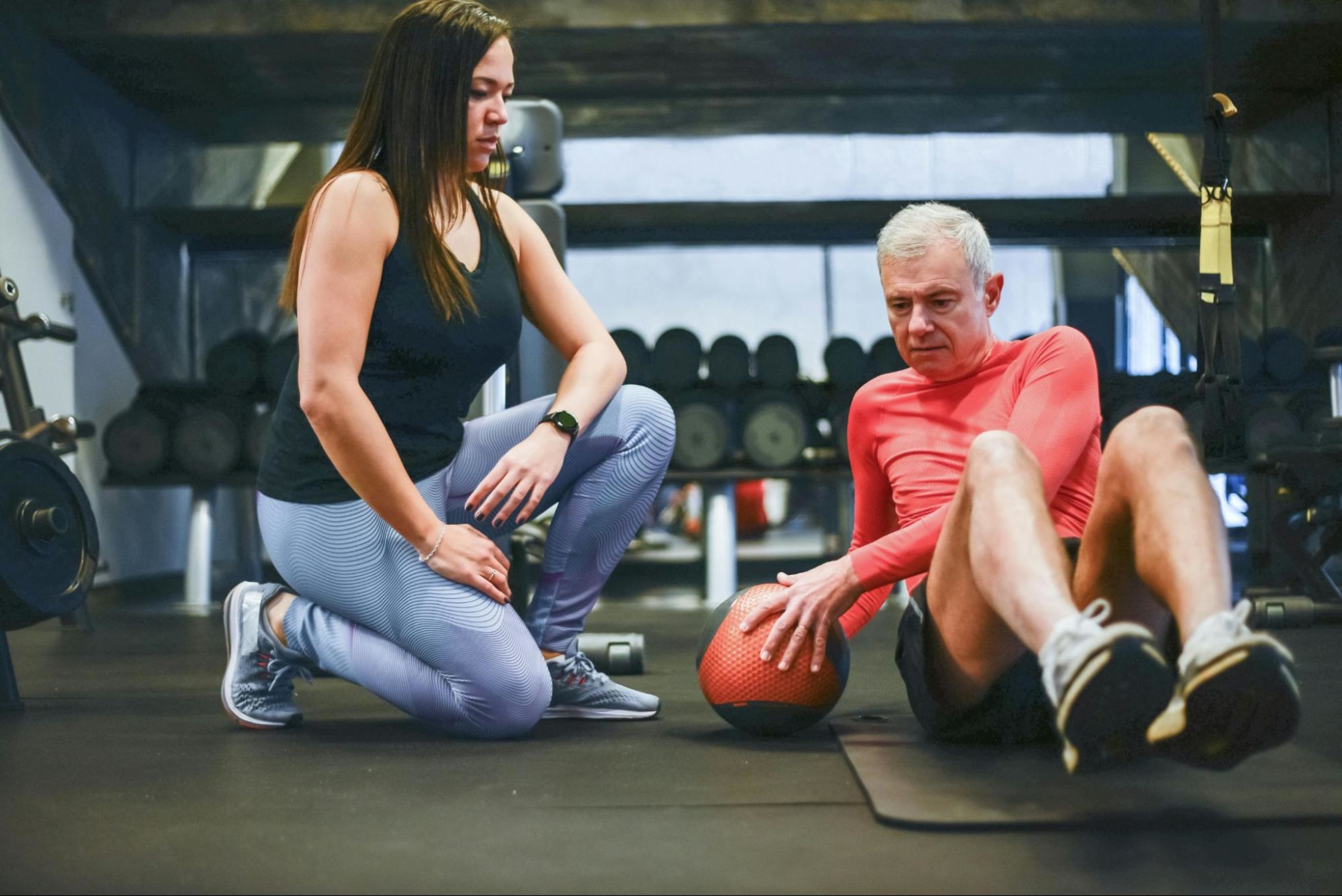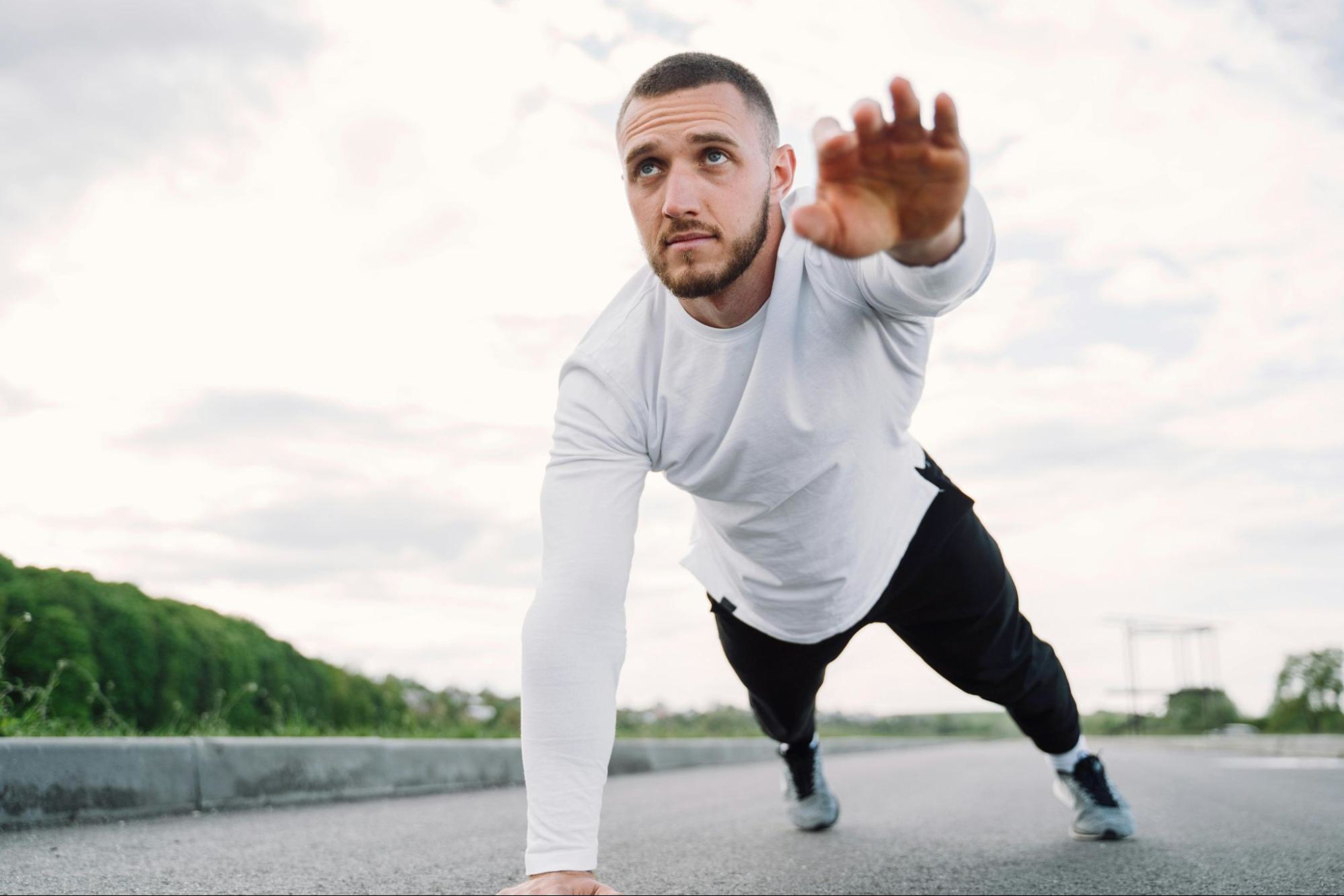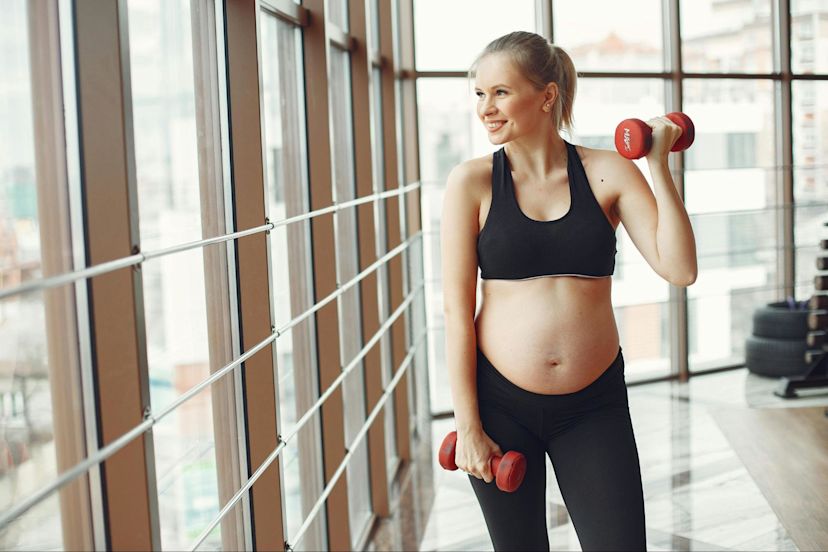The 40 Best Core Workouts: Beginner, Intermediate, and Advanced Exercises to Try

A strong and stable core is the foundation of virtually every movement we make, from everyday tasks like bending and lifting to more complex athletic activities. Core strength and stability are essential not only for building a toned midsection but also for supporting your entire body, improving posture, and enhancing your overall fitness.
When your core muscles are well-developed, you experience better balance, greater functional strength, and a reduced risk of injury. A solid core also helps distribute forces evenly through the body, making your movements more efficient and lessening strain on other muscles and joints.
In this blog, you’ll discover some of the best core workouts designed specifically to build both strength and stability. Whether you’re just beginning to focus on your core or looking to take your training to the next level, these exercises will help you develop a powerful core that supports your health, performance, and daily life.
Below, we’ll cover:
Let’s dig in!
Understanding the core
Your core is much more than just your abdominal muscles—it’s a complex group of muscles that includes the rectus abdominis (the “six-pack” muscles), obliques (side muscles), the transverse abdominis (deep, stabilizing muscles), and the muscles of your lower back, glutes, hip flexors and pelvis. Together, these muscles form a natural corset that supports your spine and connects your upper and lower body.
The core plays a vital role in virtually every movement you make. It stabilizes your body during activities like bending, twisting, lifting, and reaching, helping you maintain balance and proper posture. Whether you’re carrying groceries, playing with your kids, gardening, or even sitting at your desk, your core muscles are hard at work keeping you steady.
Plus, having a strong core doesn’t only make these everyday tasks easier—it also improves your efficiency in more intense activities like running, lifting weights, or other sports. A well-conditioned core allows your muscles to work together more effectively, improving your strength and how quickly you can reach your desired fitness and athletic goals.
Strengthening your core is key to building muscle, accelerating your progress toward fat loss and muscle definition, and performing other exercises safely and effectively. In short, a powerful core is the foundation for both everyday function and fitness success.
The benefits of core workouts
Core workouts offer a range of benefits that go far beyond just looking good. Whether you’re an athlete, a busy professional, or someone focused on everyday wellness, strengthening your core can transform how you move and feel, leading to:
1. Improved athletic performance and functional fitness
A strong core is essential for virtually every sport and physical activity. It provides the stability and power needed for running, jumping, lifting, and changing direction quickly. Core strength enhances your overall functional fitness, meaning your ability to perform everyday tasks with ease and confidence.
2. Enhanced balance and posture
Core muscles act like a natural stabilizer, helping you maintain proper alignment whether you’re standing, sitting, or moving. Strengthening your core improves your balance, reducing wobbling and falls. It also supports good posture, which can prevent aches and pains caused by slouching or poor body mechanics.
3. Reduced risk of injury, especially in the lower back
Many injuries, especially in the lower back, stem from weak or imbalanced core muscles. A strong core supports your spine and distributes forces more evenly through your body, reducing strain on joints and ligaments. This lowers your risk of injury both during workouts and in daily life.
4. Better movement efficiency in daily activities
From lifting heavy boxes to bending down to tie your shoes, core strength makes everyday movements smoother and less taxing. When your core is strong, your body can move more efficiently, conserving energy and minimizing fatigue. This means you can tackle daily tasks with greater ease and less discomfort.
Overall, core workouts build a foundation that supports everything you do—both in the gym and in life.
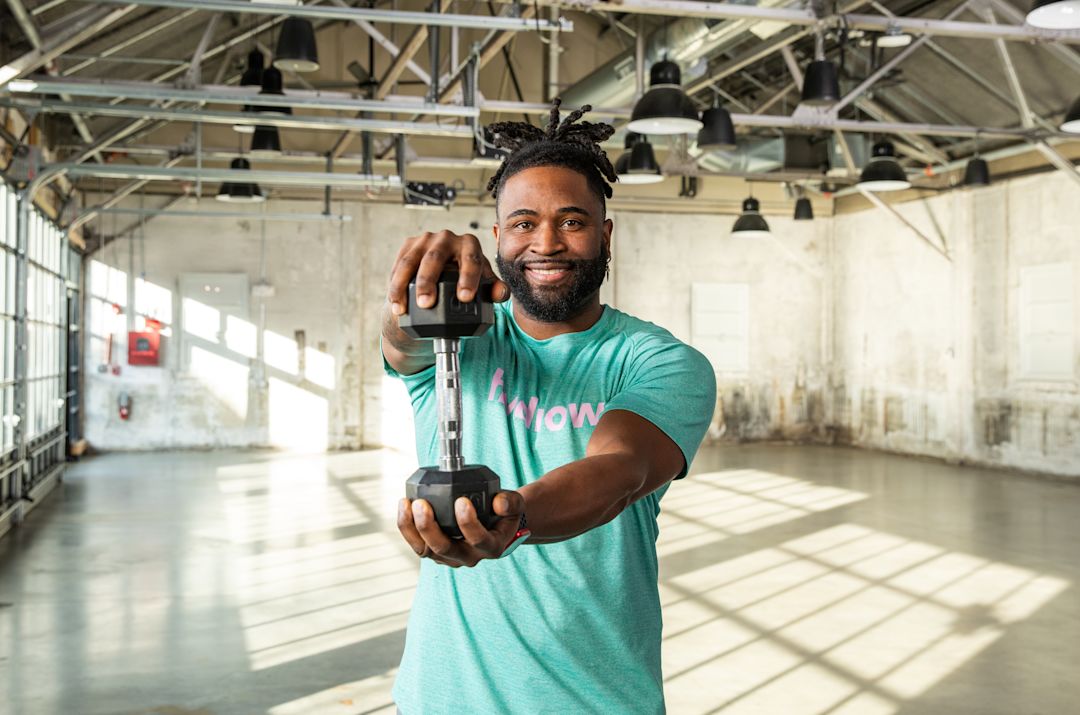
Explore Hydrow's library of strength training workouts.
The 40 best core exercises to build strength and stability
Looking to switch up your core routine? We’ve rounded up 40 of the best core exercises—including core beginner staples, intermediate moves, and advanced challenges—to help you build strength, stability, and definition:
Beginner core exercises:
Intermediate core exercises:
Advanced core exercises:
Let’s dive in!
The 13 best core exercises for beginners
Building a strong core through beginner-friendly exercises unlocks a surprising number of benefits for everyday life. Each move not only strengthens different muscles but also translates into practical, functional strength. Whether you’re bending, twisting, or changing direction quickly, a solid core keeps your body stable and controlled, giving you both strength and confidence in everything you do.
Here are 13 core exercises for beginners to set a foundation for improved core strength:
1. Planks
Stand facing a sturdy counter with your hands shoulder-width apart.
Walk back until your body forms a straight line.
Tighten your abs and keep your shoulders aligned with your wrists.
Maintain this position for up to 30 seconds.
Once you can easily execute a plank from a counter, you can try them from the floor. Put your hands on the floor in line with your shoulders, then step your legs behind, creating a straight line from your head to your toes. Again, hold for up to 30 seconds.
2. Around-the-clock
Keep one leg stationary, slightly bent and contracted while the other leg moves “around the clock” from a 1 o’clock, 3 o’clock, and 6 o’clock position, lightly tapping the toe of the moving foot.
Switch sides and repeat.
3. Bird dog
Start on your hands and knees with your wrist under your shoulders, your hips over your knees, and your head and neck in a neutral position.
Lift your left arm, aiming to make a straight line from your shoulder. Lower down to your start position and repeat with your right arm.
Lift your left leg, aiming to make a straight line from the hips. Keep your hips square to the ground. Lower and repeat with your right leg.
Once easily executed, lift the left leg and right arm simultaneously, keeping your shoulders and hips parallel and square to the floor and your back straight.
Lower and repeat with the other arm and leg.
4. Dead bug
Lie on your back with your knees bent at 90 degrees and your arms straight up from your shoulder. Your lower back should be in contact with floor
Lower your left arm and right leg, aiming for just above the floor while maintaining tight abs and connection to the floor with your lower back.
Return to start and repeat with the opposite arm and leg.

Explore Hydrow’s library of 5,000+ rowing, circuit training, yoga, Pilates, and mobility workouts.
5. Mountain climbers
Stand with your hands shoulder-width apart on a counter. Walk back until your body forms a straight line.
Bring one knee toward your chest, keeping your back straight and the hips up and square.
Switch legs, bringing the other knee forward.
Continue alternating legs at a steady, controlled pace.
Once you can do counter mountain climbers easily, you can move to the floor. Keep your hands on the floor in line with your shoulders, then step your legs behind, creating a straight line from your head to your toes. Then, start the movement of bringing your knee to your chest, alternating legs.
6. Supermans
Lie face down with your arms and legs extended.
Engage your core by pulling your belly button to your spine. Lift your arms and legs off the ground while maintaining straight arms and legs.
Pause briefly at the top.
Slowly return to the starting position.
7. Back extensions
Set up a 45-degree angle extension bench so the thigh pad is below your waist and you can fully bend over.
Mount the bench, placing your heels onto the heel pad/plate to hold yourself into position.
Keep your legs straight and cross your arms over your chest (you can hold weights once you’re comfortable with the movement).
Bend at the waist to slowly lower your torso, bending until you feel a pull in the back of the leg.
Return to the starting position, engaging your glutes and hamstrings as you keep your back straight.
8. Crunches
Lie on your back with your knees bent and your feet flat on the floor.
Place your hands behind your head or cross them over your chest.
Press your lower back into the floor by engaging your core.
Curl your shoulders and upper back off the floor, lifting your chest up. Keep your neck neutral as you gaze up.
Pause at the top, squeezing your abs.
Lower back down slowly with control.
9. Reverse crunches
Lie on your back with your feet flat and your knees bent.
Lift both feet three inches off the ground.
Bring your knees towards your body, lifting your hips off the ground.
Lower your legs to the starting position.
10. Glute bridges
Lie on your back with knees bent and feet flat on the floor, heels close to your glutes.
Lift your hips off the floor to create a straight line from your shoulders to your knees, by engaging your core and glutes.
Briefly hold your body in a straight line from your head to your toes.
Slowly lower your hips back down to the starting position.
11. Bear hover
Start on your hands and knees, hands directly under your shoulders and your knees under your hips.
Engage your core and tuck your toes.
Lift your knees about 1–2 inches off the ground, keeping your back flat and your hips level.
Hold position for desired amount of time.
Lower knees to start position.
12. Side plank
Lie on your side with legs stacked, knees bent to 90 degrees.
Prop your upper body up on your elbow, with your elbow under your shoulder.
Lift your hips off the floor to create a straight line from knee to head. Ensure your hips stay square.
Hold steady for desired time.
Once easily executed, complete with straight legs, lifting your hips off the floor to create a straight line from your toes to your head.
13. Counter shoulder taps
Stand facing a counter with your hands on the edge for support.
Step your feet back slightly so your body forms a straight line.
Lift one hand to tap the opposite shoulder while keeping your core tight.
Return your hand to the counter and repeat on the other side.
Continue alternating sides in a controlled rhythm.
The 14 best intermediate core exercises
For those ready to take their core training to the next level, these intermediate exercises offer dynamic ways to build strength, stability, and definition throughout the midsection.
1. Plank to downward dog
Start in a plank position.
Push into hands, keeping legs as straight as possible, lifting hips up and back into downward dog position.
Maintain an engaged core.
Return to the plank position by shifting shoulders over hands and bring hips forward and down.
2. Plank with alternating leg lift
Start in the plank position.
Squeeze your glutes and lift one leg a few inches off the ground.
Maintain square hips, a straight back, and a straight leg by lifting from your glute, not your lower back.
Hold for 2 seconds, then lower your leg with control.
Repeat on the other side and continue alternating legs.
3. Russian twists
Sit on the floor, with feet flat on the ground (easier) or feet lifted a few inches (harder). Keep your upper body tall and lean your upper body back to a 45-degree angle, creating a V shape with your thighs and upper body.
Clasp your hands out in front of you, rotating from the torso bring the hands to one side keeping the chest tall.
Twist back through the center to the other side. Keep the movement slow and controlled.
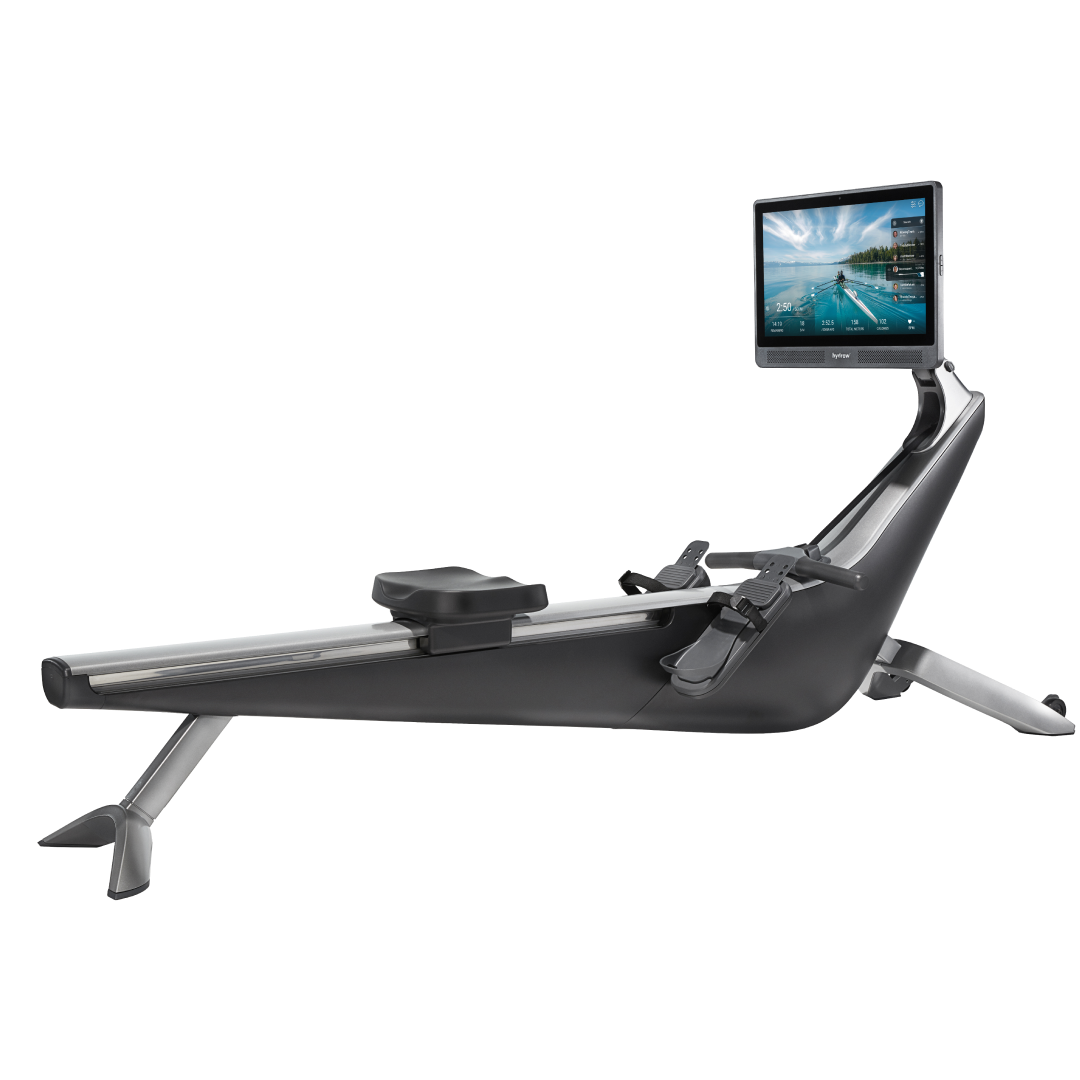
Cardio and strength, combined
Burn calories and build muscle with steady, natural movements.
4. Bear crawls
Start on your hands and knees, shoulders over hands and hips over knees.
Press into your hands and toes to lift knees slightly off the ground (bear hover position).
Move forward by simultaneously moving your opposite hand and foot.
Keep your back flat, hips level and your core engaged.
5. Hollow body hold
Lie flat on your back with your arms extended overhead and legs straight.
Engage your core by pressing your lower back into the floor.
Lift your head, shoulders, and legs off the ground simultaneously.
Keep your arms straight and close to your ears.
Hold this position, maintaining a tight core and flat lower back.
Breathe steadily and hold for the desired time (e.g., 20–30 seconds).
Slowly lower back down to rest.
6. Up-down planks
Start in a forearm plank with your elbows under your shoulders, core engaged, and body in a straight line.
Push up to a high plank by placing one hand on the floor under your shoulder, then the other, straightening both arms.
Lower back down by returning to the forearm plank one arm at a time.
Repeat the movement, alternating sides while keeping your hips stable (avoid dipping side to side during the movement) and your core tight.
7. Shoulder taps
Begin in a plank position.
Lift one hand to tap the opposite shoulder while keeping your core tight, maintaining stable shoulders and hips
Return your hand to the floor and repeat on the other side.
Continue alternating sides in a controlled rhythm.
8. Side plank with hip abduction
Start in a side plank position, with your elbow directly under your shoulder, your legs extended and stacked on top of each other (or place one foot in front of the other for more stability).
Lift your hips so your body forms a straight line from your head to your feet.
Engage your core and glutes to keep your hips high and steady. Shoulders and hips remain square.
Raise your top leg slowly a few inches from your bottom foot, leading with the heel and keeping it straight, hold at the top, and then lower with control.
Repeat, then switch sides.

Explore Hydrow’s library of Circuit Training workouts from around the world.
9. Side plank with reach under
Start in a side plank position, with your elbow directly under your shoulder and your legs extended and stacked on top of each other (or place one foot in front of the other for more stability).
Engage your core and lift your hips up to create a straight line from head to feet.
Extend your outer arm straight up to the ceiling.
Rotate your torso toward the floor, bringing your top arm down and threading it under your body.
Return your arm to the starting position.
Perform reps for one side, then switch sides.
10. Woodchoppers
Stand with your feet shoulder-width apart, knees soft and abs braced.
Clasp your hands together, holding onto a resistance band, medicine ball or cable, next to the right hip.
Rotate and drive the arms diagonally across the body above the opposite (left) shoulder.
Let your hips pivot naturally to help power the movement, but keep the core tight.
Return the hands to the right hip with control.
Complete all reps, then repeat on the other side.
11. Plank jacks
Start in a plank position with your hands under your shoulders.
Jump your feet apart, pause, then jump feet back together. Be sure to keep your body in a straight line throughout movement.
Repeat.
12. Crab walk
Sit on the floor with knees bent, feet flat, hands behind you.
Fingers face towards feet.
Lift hips up by pressing through hands and feet, and squeezing the glutes.
Simultaneously move the right hand and left foot forward a small distance.
Continue this opposite-hand/opposite-foot pattern.
Move with control, keeping your hips hovering at the same height.
13. V-ups
Lie flat on your back with your arms extended straight overhead and legs fully extended.
Engage your core and simultaneously lift your upper body and legs off the ground.
Reach your hands toward your toes, forming a “V” shape with your body.
Aim to balance on sit bones and hold briefly at the top, squeezing your abs.
Slowly lower your arms and legs back down with control.
14. Hanging knee raises
Hang from a pull-up bar with your arms fully extended and grip shoulder-width apart.
Keep your body stable and engage your core to limit body swing.
Bend your knees and lift them toward your chest.
Pause briefly at the top, squeezing your abs.
Slowly lower your legs or knees back down with control.
The 13 best advanced core exercises
These advanced core exercises take things up a notch by adding asymmetrical movements, increased coordination demands, and the challenge of external weight.
1. Renegade row
Get into a plank position, with your hands gripping dumbbells directly under your shoulders. Your feet can be slightly wider than shoulder width for increased stability and better balance.
Keep a straight line from your head to your heels, engaging your core and glutes.
Row one dumbbell up toward your ribcage, bending and lifting your elbow straight back toward the ceiling, keeping it close to your body.
Lower the dumbbell slowly back to the floor, then repeat on the other side.
Keep your hips level throughout the movement.
Alternate sides.
2. Single-arm farmers carry
Hold a heavy dumbbell or kettlebell in one hand at your side.
Stand tall and walk forward without leaning or letting your torso tilt.
Switch hands and repeat.
3. Weighted plank
We recommend having a partner help with this exercise.
Get into a plank position.
Have a partner place a weight plate on your back (start with 10–25 lbs).
Engage your core and hold a flat plank without sagging or arching.

Did you know?
Over 90% of Hydrow members are still active one year later.
4. Cable or band anti-rotation press with step-out
Attach a resistance band to a sturdy anchor at chest height.
Hold the band at your chest and step laterally away from the anchor.
Press your hands straight out and hold, resisting the pull. Keep your shoulders and hips square, resisting any rotation.
Complete desired reps then switch sides.
5. Decline sit-ups with rotation
Secure your feet on a decline bench.
Hold a light weight or medicine ball at your chest.
Sit up and rotate your torso to one side.
Lower back down with control and repeat on the opposite side.
6. Stability ball stir-the-pot
Start in a forearm plank with elbows on a stability ball.
Keeping your core tight, move your forearms in small circles on the ball.
Complete desired time then switch directions.
7. Barbell rollouts
Load a barbell with round plates and kneel behind it. You can also do this exercise with a stability ball from a high plank position.
Grip the bar and slowly roll it forward keeping your shoulders over your hands, extending your body while keeping your core tight. Continue to extend your arms overhead to make this exercise harder.
Stop just before your hips drop or your back arches.
Roll back to the starting position.
8. Stability ball pike
Start in a plank position with your feet on a stability ball and hands on the floor.
Use your abs to lift your hips toward the ceiling, rolling the ball toward your hands as you aim to create a pike position.
Pause at the top, then slowly lower back to the plank.
9. L-sit hold
Sit between two parallettes or dip bars and press into your hands to lift your body.
Extend both legs straight out in front of you, forming an “L” shape.
Keep your core tight and legs lifted.
Hold for desired time (e.g., 10–30 seconds).
10. Hanging leg raises
Hang from a pull-up bar with your arms fully extended and grip shoulder-width apart.
Keep your body stable and engage your core.
Keep your legs straight and lift them up until they’re parallel to the ground or higher.
Pause briefly at the top, squeezing your abs.
Slowly lower your legs back down with control.
11. Hanging windshield wipers
Hang from a pull-up bar with your arms fully extended.
Lift your legs up to a 90-degree angle.
Slowly rotate them side to side like windshield wipers, keeping your core tight.
12. Turkish get-up
Lie on your back holding a kettlebell overhead in one hand.
Bend the knee on the same side and place your opposite arm out at 45 degrees.
Slowly rise to a standing position through a series of controlled steps.
Reverse the movement to return to the floor.
13. Dragon flags
Lie on a bench and grip behind your head for support.
Lift your legs and hips off the bench, forming a straight line from shoulders to feet.
Lower your body slowly, keeping it rigid, until just above the bench.
Raise back up with control.
How to incorporate core workouts into your fitness routine
Building a strong and stable core doesn’t require hours in the gym, but it does take consistency, smart programming, and proper technique. Here's how to get the most out of your core training:
Recommended frequency and duration
To build core strength and stability effectively, aim to include core-focused workouts in your routine two to four times per week. Each session can be short—10 to 20 minutes is enough to see results when exercises are performed with intention and good form. You can dedicate entire sessions to core work or mix core exercises into your full-body or strength training workouts.
Tips for progressing intensity safely
As you build core strength, gradually increase the challenge by:
Adding resistance (dumbbells, resistance bands, or a cable machine)
Using instability (stability ball, BOSU ball, etc.)
Advancing to more complex or dynamic movements
Adding in asymmetrical movements to challenge core stability and balance, as well as address potential side-to-side imbalances.
These progressions ensure continued improvement without risking injury.
Combining core workouts with full-body strength training
Core workouts don’t need to be done in isolation. Some of the most effective core training happens when you pair core exercises with compound lifts like squats, deadlifts, and overhead presses—moves that naturally engage your core while training other major muscle groups.
Importance of proper form and breathing
No matter your experience level, form and breathing matter. Focus on engaging your core by pulling your belly button toward your spine, which helps to activate the deep core muscles. Exhale during the effort phase (e.g., when crunching up or pressing out) and inhale on the release. Proper technique not only helps you target the right muscles but also protects you from strain or injury.
Related blog: How to Breathe When Lifting Weights
Common core workout mistakes to avoid
Even with the best intentions, it’s easy to fall into habits that limit results or increase your risk of injury. Here are some common mistakes to watch out for:
Overtraining the core without rest: Your core muscles need time to recover, just like any other muscle group. Training them every day without proper rest can lead to fatigue, poor performance, and even overuse injuries. Aim for 1–2 days of rest between core-intensive sessions.
Neglecting the lower back and other supporting muscles: A truly strong core isn’t just about your abs. If you only focus on the front of your body and ignore your lower back, hips, and glutes, you’re more likely to develop imbalances that can affect posture and lead to pain. Make sure your workouts target the entire core, front to back.
Relying on momentum instead of muscle engagement: Swinging your legs or rushing through reps may feel like a workout, but it often shifts the work away from your core. Focus on controlled, deliberate movements that keep your core muscles fully engaged throughout each exercise.
Holding your breath during exercises: It’s common to hold your breath when straining, but this can raise blood pressure and reduce oxygen flow. Learn to breathe with control: Exhale on effort, inhale on release. This simple adjustment makes your workouts safer and more effective.
A sample core workout plan
Here are three 15- to 20-minute core workout templates tailored to beginner, intermediate, and advanced fitness levels, along with a warm-up and cool-down for all levels to help you stay mobile, safe, and prepared for the movements ahead.
Warm-up (5 minutes for all levels)
Cat-cow stretch (1 minute)
Glute bridges (1 minute)
Bird dogs (1 minute)
Standing trunk rotations (1 minute)
Bodyweight squats or jumping jacks (1 minute)
Beginner core workout (15 minutes)
This routine is perfect for building foundational strength and stability.
Around-the-clock: 2 sets of 5 times around the clock
Plank: 3 sets of 20–30 seconds
Side plank: 2 sets of 20–30 seconds per side
Reverse crunches: 3 sets of 8–12 reps
Bird dog: 2 sets of 8–12 reps per side
Supermans: 3 sets of 8-12 reps
Optional finisher: Mountain climbers (2 sets of 20–30 seconds)
Intermediate core workout (15–20 minutes)
This workout is ideal for those with a solid base who want to increase challenge and variety. After doing your first three sets of hollow body holds, we recommend doing 8–10 reps of each exercise per side.
Hollow body hold: 3 sets of 20–30 seconds
Russian twists: 3 sets of 8–12 reps
Plank with alternating leg lift: 2 sets of 8–12 each side
Side plank with reach under: 2 sets of 8–12 each side
Hanging knee raises: 3 sets of 8–12
Woodchoppers (resistance band or cable): 2 sets of 8–12 reps each side
Optional finisher: Crab walk (2 sets of 20–30 seconds)
Advanced core workout (20 minutes)
This workout is designed for experienced exercisers ready to train with intensity and control.
Stability ball stir-the-pot: 3 sets of 10–20 seconds each direction
Hanging leg raises: 3 sets of 8–12 reps
Decline sit up with rotation: 3 sets of 8–12 reps
Turkish get-up: 2 sets of 4–5 reps per side
Cable anti-rotation press with step-out: 2 sets of 8–12 reps per side
Stability ball pike: 3 sets of 8–12 reps
Optional finisher: Single-arm farmers carry (2 sets of 20–30 seconds)
Cool-down (3–5 minutes for all levels)
Cobra stretch
Child’s pose
Seated forward fold
Supine spinal twist
Ready, set, strengthen!
A strong, stable core is essential for everything from injury prevention to better posture and performance in your workouts. Whether you’re lifting, running, or just carrying groceries, your core is working to support you.
By incorporating consistent core training into your routine—and focusing on form, balance, and progression—you’ll build a foundation that benefits your entire body.
Ready to get started? Try one of the workout templates above, or explore even more options from Hydrow. Hydrow offers guided strength training workouts for every fitness level, all led by world-class Athletes who coach you through each movement and help you stay consistent. Additionally, our rowing workouts target 86% of your muscles with every stroke (including your core!) delivering full-body training and real results.
Explore Hydrow’s strength workouts and see how far you can go.
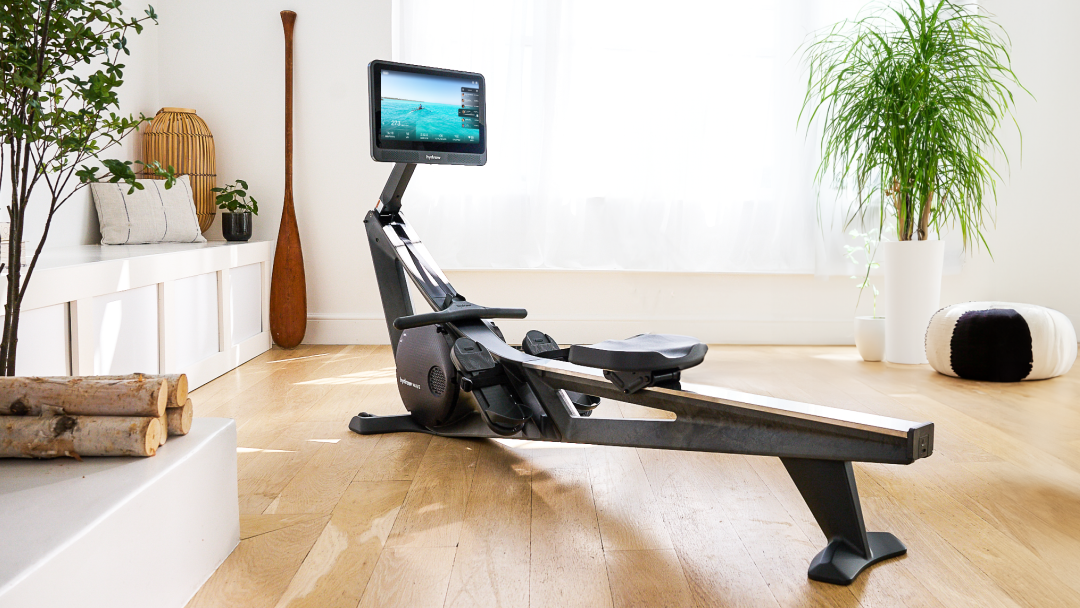
Real strength keeps moving
Learn how working out with Hydrow can help support a fuller, more active life.


